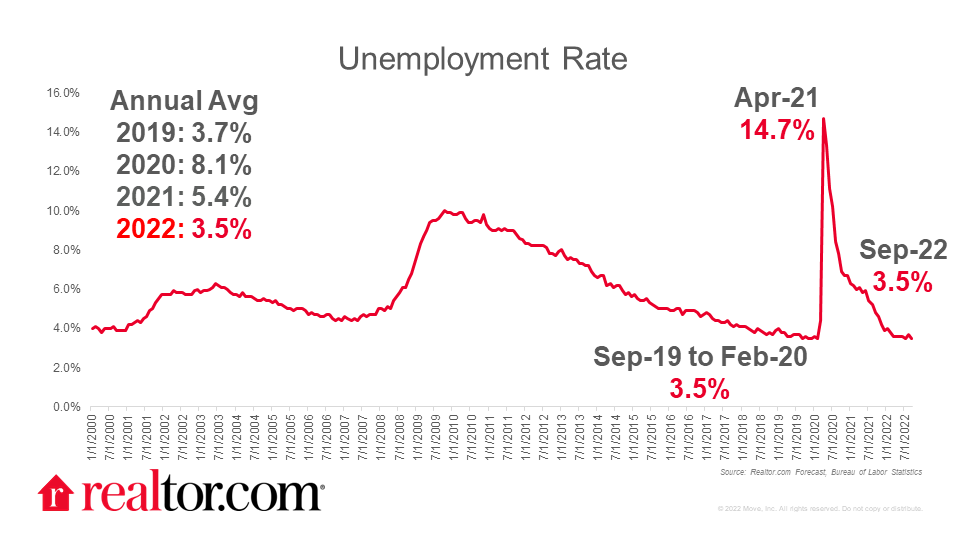What happened in the August employment report?
Amid ongoing concerns of an economic slowdown, companies added 263,000 new jobs in September after adding 315,000 in August. September’s job additions lagged the year’s average to date of 420,000 monthly new jobs. September’s additions resulted in 153.1 million nonfarm payroll employed persons in the U.S. in September, surpassing pre-pandemic levels. Slowed employment gains reflect the ongoing monetary tightening efforts of the Fed, who raised the federal funds rate 75 basis points in September, further notching up the cost of borrowing. The Fed has continued to emphasize its goal of targeting still-high inflation, which was 8.3% in August, in an effort to return prices to a healthy level.
Job openings fell to 10.1 million in August, dropping below the 11 million mark that has held in recent months, while the number of unemployed persons fell to 5.8 million, cutting the unemployment rate back down to 3.5%. The labor force participation rate remained fairly steady at 62.3%, still below the pre-pandemic level of 63.4% as some Americans have remained out of the labor market. The average hourly wage rose slightly to $32.46, a 5.0% increase over the last year, lagging August’s growth and still lagging headline inflation. Job searcher sentiment showed a significant shift, as the number of discouraged workers, a measure of workers who would like a job but are not searching and believe no jobs are available for them, increased from 119,000 to 485,000 in September.
The leisure and hospitality and health care sectors continued to see sizable employment gains this month. Leisure and hospitality added 83,000 jobs, still 6.7% below pre-pandemic levels, while health care added 60,000 jobs, returning to pre-pandemic levels. COVID working arrangements have shifted again this month as 5.2% of employees report working remotely, down from 6.5% last month, as many workers return to the office. The number of workers who reported being unable to work because of pandemic-related closures dropped from 1.9 million in August to 1.4 million in September.
What does today’s data mean for homebuyers and sellers and the housing market?
Overall, the labor market remains strong with low unemployment and sizable job growth. However, home shoppers are feeling the pressure with mortgage rates climbing towards 7%, still-high home prices, sustained inflation, and wage increases failing to keep up with rising costs. The tight labor market may offer home shoppers flexibility by opening up job and home buying possibilities. Buyers can aim to expand their budget by targeting a higher-paying job or may consider taking advantage of remote work arrangements and relocating to a more affordable area. Along with the job market, seasonal patterns and shifting housing demand are creating opportunities for home shoppers across the US. Many buyers could even find a good deal as homes are spending more time on the market and price reductions are on the rise. Home buying will continue to present challenges for many, but tools like Realtor.com’s Rent or Buy and Affordability Calculators can help home shoppers explore what is within their reach in different wage, mortgage rate, and location scenarios.
Subscribe to our mailing list to receive updates on the latest data and research.


